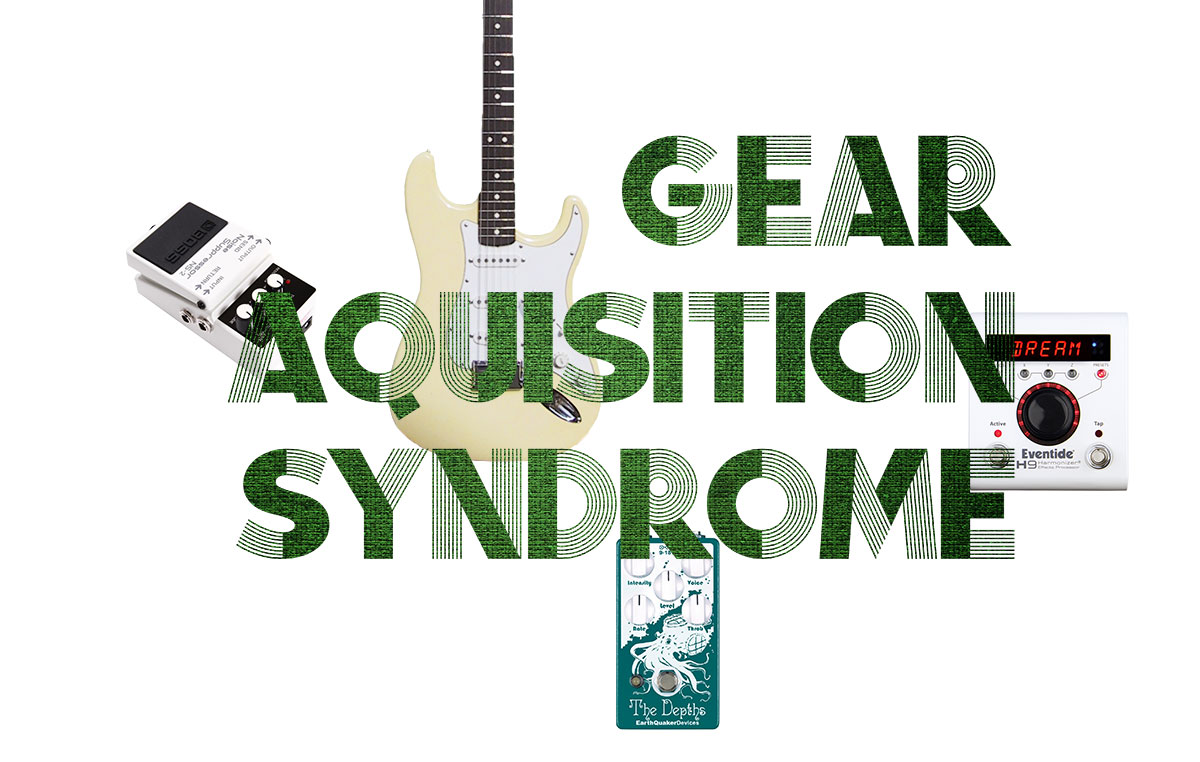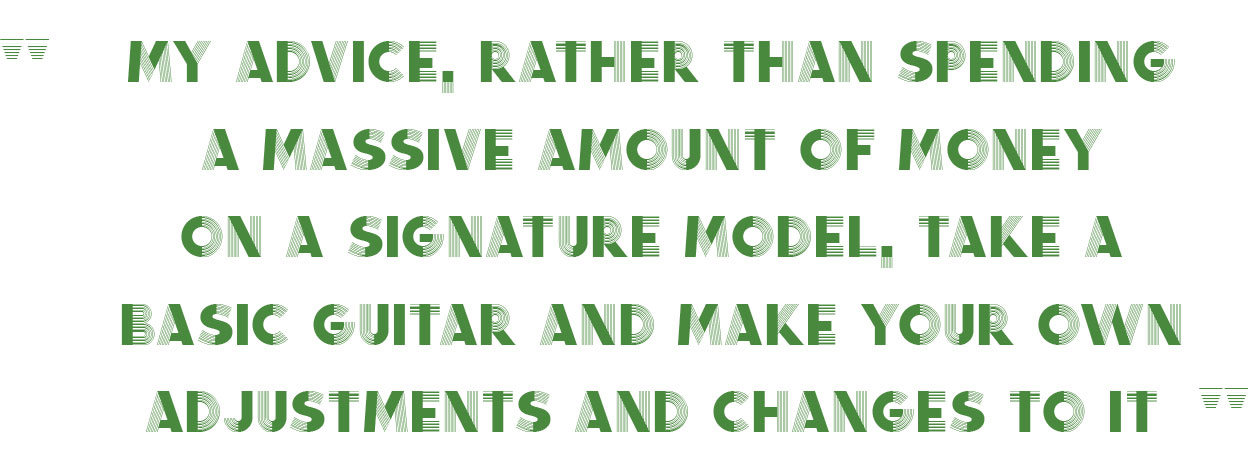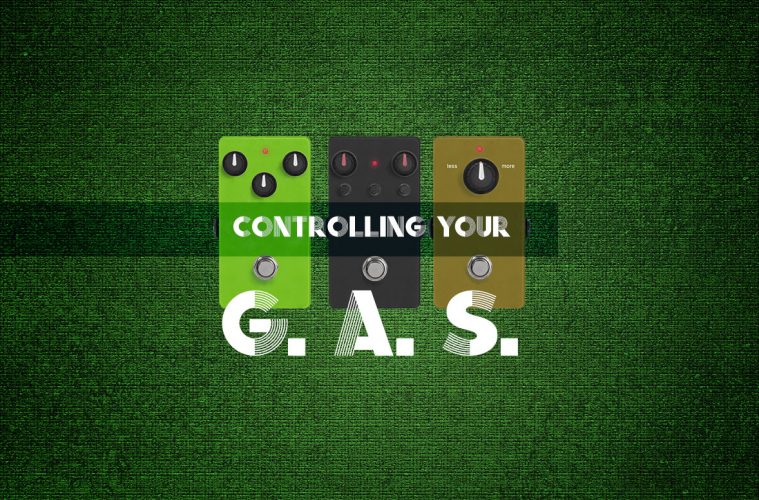 e all know G.A.S can be uncomfortable. Not in the way that it makes your stomach hurt, but more in the judgment you feel from family and friends when they walk into your living room and see two Marshall half stacks. And if you’re one of those people wondering if those two Marshall half stacks are Marshall ’68 Plexi’s, then you’d better read on!
e all know G.A.S can be uncomfortable. Not in the way that it makes your stomach hurt, but more in the judgment you feel from family and friends when they walk into your living room and see two Marshall half stacks. And if you’re one of those people wondering if those two Marshall half stacks are Marshall ’68 Plexi’s, then you’d better read on!
Gear Acquisition Syndrome is a common curse among musicians, the all-consuming desire to add more equipment to an already overloaded collection of music gear. It is an affliction that has caused the dissolution of marriages, relocation to troll-like living quarters (under bridges obviously) and bank balances that plunge into the red.
In the same way that the internet has had a profound impact on all aspects of the music business, the availability of new shiny products demonstrated in high definition video before one’s quivering eyeballs has made the acquisition of gear for many an ongoing Grail quest.
Years ago the only way to hear what a piece of gear like an amp did was to trek down to the local music shop and plug your guitar in, but now just check your Google search history and you’ll find an endless stream of forums, YouTube demos and gear review websites. Oh and hopefully some TrueFire lessons!
So let’s address an age-old debate.

Is good tone in the fingers or can it only be attained with a Dumble? I’m paraphrasing the question slightly there, but you get my point. Somewhere the germ of an idea was propagated that there is a mystical piece of gear out there that will allow you to play like your favorite guitar hero, if only you can find it.
This may surprise many to learn, but I’m much less interested in gear and the acquisition of it than most of my students. I spent 10 years performing at clubs and festivals with a trio and for most of that time played one guitar and used a Fender Vibrolux amp. I used one pedal for overdrive and clean boost, an occasional vibe and/or delay and that was pretty much it. I used the pickups, plus the volume and tone controls on the guitar a lot to vary the sound. A funny side note to that is the guitar was such a work-horse that people used to come up and ask if it was “relic-ed” meaning artificially aged, but no, I just had that one guitar and I played it a lot!

Fast forward to now and yes, my tastes have changed – I now own a 20th Anniversary Bogner Shiva (EL34) amp, my current go-to guitar is an Xotic XSC and for effects, I recently delved into an Eventide H9, so it’s fair to accuse me of upgrading a tad into G.A.S. territory. But I do tend to stick with the same gear for a long time.
When it comes to chasing tone, I like to reference Jeff Beck, the man has consistently amazing tone and tends to stick with a strat into a Marshall. But also watch the constant adjustments the Guv’nor makes to his tone and volume controls on the guitar. A tip I learned from reading about Beck is to never play with a strat volume all the way up. I tend to stick to around 6-7 for rhythm and 8-9 for lead. Go above 9 and to me the pickups start to sound too glassy. I also like to run the amp treble control up pretty high and take the guitar treble down, especially on the bridge pickup.

Now before I offend some of you who may be a tad bloated with G.A.S. let me say that there’s nothing wrong with being interested in gear and for some players it’s as much fun as the actual playing, especially when you enjoy discussing gear with others online and feeling like you’re part of a community. I get that and it’s great, but for me there aren’t enough hours in the day as it is (especially with a 4 year old), so I’d rather find something I like that works and then focus on the playing aspects rather than the equipment tweaking.
Maybe you’ve seen some YouTube clips of players like Eric Johnson and Steve Vai playing other people’s equipment and sounding exactly like themselves? This I would argue is pretty definite proof that tone is in the fingers and the heart of the player. But that said, they don’t tend to use cheap gear, so having nice equipment that is well made and reliable takes the tone you have in your fingers and amplifies it (pun intended). But players like these have put in a massive amount of time on the instrument learning how to play and defining their tone from within. I bet they learned on basic equipment. The first guitar I ever owned was made by a company in the U.K. called Axe and had the word ‘AXE’ displayed in massive letters on it. It was red, subtle in no way whatsoever and played about as badly as any instrument ever could, the action was so high it had snow on it, but I loved that guitar and by the time I upgraded a couple of years later to a better playing guitar, the Charvette (Charvel’s illegitimate child), I was in heaven.
I find the idea that people want an exact replica of their favorite players gear a little odd though. Especially in cases like the replica models of Edward Van Halen’s Frankenstrat, which are basically falling apart at the factory. And that’s on purpose! I love seeing well-worn gear, but often there are features and adjustments to guitars in particular that are very specific to the individual. My advice, rather than spending a massive amount of money on a signature model, take a basic guitar and make your own adjustments and changes to it, ones that make sense to you, to benefit the way you play, the style you like, make it comfortable and put pickups in it (or even leave the ones in it that came from the factory) that help define the sound you’re after and then you have your own signature model instrument.

So the thought I’ll leave you with is if you’re a hobbyist player that revels in your G.A.S. then good for you. However if you’re frustrated with your playing and feel you’re not progressing in some way, but tend to spend a lot of time on gear forums and reading about equipment then perhaps reevaluate the use of your time and try to balance your G.A.S with playing the guitar. You can pick up different guitars, plug them into different amps and pedals but what is it you’re actually playing through the equipment? Yes, a new pedal can inspire new ideas, but so can digging a little deeper into music itself and finding inspiration within those same 12 notes can be life affirming. The hardest part of practicing is opening the guitar case. Remember the instrument will always give back to you what you put into it and then some.


